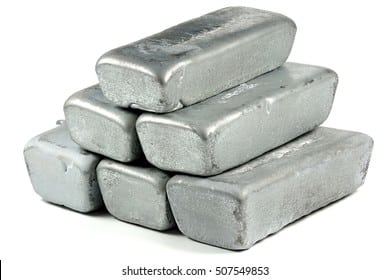Kinematic equations are mathematical equations used to describe the motion of objects in terms of their position, velocity, and acceleration. They are used in the field of physics, especially in classical mechanics, to study the motion of objects without considering the forces that cause the motion.

These equations are a set of formulas that relate to the five kinematic variables listed below:
- Displacement (Δx, shortest distance between two points)
- Time interval (t, time between two intervals)
- Initial velocity (vi, the object’s velocity before the acceleration effect)
- Final velocity (vf, object’s velocity at the end of the given time period)
- Constant acceleration (a, rate of change of displacement)
We can solve for one of the unknown variables using kinematic equations if we know three of the five kinematic variables for an object under constant acceleration.
The kinematic equations are the following four equations.
| 1 | vf=vi+at |
| 2 | Δx=((vf+vi)/2) t |
| 3 | Δx=vit + 1/2 a t2 |
| 4 | vf2 =vi2+2aΔx |
Table of Contents
Important Points
- kinematic equations are only correct if the acceleration is constant during the time interval considered, we must be careful to not use them when the acceleration is changing.
- The kinematic formulae are based on the assumption that all variables are pointing in the same direction.
Numerical Problems
1. A bicycle accelerates at 1 m/sec2 from an initial velocity of 4m/sec for 10 seconds. Find the distance moved by it during this interval of time.
Δx=vit + 1/2 a t2
Δx= 4m/sec x 10 sec + 1/2 x 1m/sec2 x (10 sec)2 = 90m
Thus the bicycle will move 90 metres in 10 seconds
2. A car travelling at 10 m/sec accelerates uniformly at 2 m/sec2. Calculate its velocity after 5 seconds.
Using the first kinematic equation
vf=vi+at
vf = 10 m/sec + (2 m/sec2 x 5 sec) = 20 m/sec
The velocity of the car after 5 sec is 20 m/sec
3. A train slows down from 22.2 m/sec with uniform retardation of 2 m/sec. How long will it take to attain a speed of 5.6 m/sec
vf=vi+at
t = (vf -vi)/a = (5.6 m/sec – 22.2 m/sec)/(-2m/sec2) = 8.3 seconds
4. A train starts from rest. It moves through 1 km in 100 sec with uniform acceleration. What will be its speed at the end of 100 seconds?
To find acceleration, Using the third kinematic equation
Δx=vit + 1/2 a t2
Δx = (0) x 100 + 1/2 (a) (100)2
1000 meter= (0) x 100 + 1/2 (a) (10000)
1000 meter= (0) x 100 + 5000 a
a = 1000/5000 = 0.2 m/sec2
To find final velocity, using first kinematic equation
vf=vi+at
vf = 0 + (0.2)(100) =20 m/sec
5. A car starts from rest with an acceleration of 0.5 m/sec. Find its speed in km/hour when it has moved through 100 m.
Given Data:
Distance = Δx =100 m
initial velocity = vi = 0
Acceleration = a = 0.5 m/sec
Final velocity = vf =?
vf2 =vi2+2aΔx
2aΔx = vf2 – vi2
2 x 0.5 x 100 = vf2 – 0
vf2 = 100 m2/sec2
vf = 10 m/sec (taking square root of vf2)
vf = 10 x 3.6 km/hour (1 m/sec = 3.6 km/hour)
vf = 36 km/hour
6. A cricket ball is hit vertically upwards and returns to the ground 6 seconds later. Calculate the maximum height reached by the ball and the initial velocity of the ball.
Given Data:
Gravitational acceleration = g = -10 m/sec2
Total time = t = 6 sec
Time for upward journey = t1 = 6/2 = 3 sec
At maximum height final velocity = vf = 0
Initial velocity = vi =?
Maximum height = Δx = h = ?
vf=vi+gt (a =g)
vf2 =vi2+2aΔx
vf = vi + gt
0 = vi + (-10)(3)
vi = 30 m/sec
2g Δx = vf2-vi2
2 (-10)(h) = 0 – (30)2
-20 x h = – (30)2
h = (30)2 /20 = 900/20 = 45m
7. An object starts from rest and accelerates at a rate of 2 m/s^2 for 5 seconds. What is its final velocity?
Solution: We can use the equation v = v0 + at. In this case, v0 = 0 m/s (the object starts from rest), a = 2 m/s^2, and t = 5 s. Plugging in the values, we get:
v = 0 m/s + (2 m/s^2)(5 s) = 10 m/s
So the final velocity of the object is 10 m/s.
8. An object moves with an initial velocity of 10 m/s and accelerates at a rate of 3 m/s^2 for 2 seconds. What is its final velocity?
Solution: We can use the equation v = v0 + at. In this case, v0 = 10 m/s, a = 3 m/s^2, and t = 2 s. Plugging in the values, we get:
v = 10 m/s + (3 m/s^2)(2 s) = 16 m/s
So the final velocity of the object is 16 m/s.
Multiple Choice Questions
- Which of the following is NOT one of the four kinematic equations?
a. v = u + at
b. s = ut + (1/2)at^2
c. v^2 = u^2 + 2as
d. F = ma
Answer: d. F = ma is not a kinematic equation, it is Newton’s second law of motion.
- What does the symbol “u” represent in the kinematic equations?
a. Initial velocity
b. Final velocity
c. Acceleration
d. Displacement
Answer: a. Initial velocity
- What does the symbol “a” represent in the kinematic equations?
a. Initial velocity
b. Final velocity
c. Acceleration
d. Displacement
Answer: c. Acceleration
- What does the symbol “s” represent in the kinematic equations?
a. Initial velocity
b. Final velocity
c. Acceleration
d. Displacement
Answer: d. Displacement
- Which kinematic equation should be used to solve for final velocity when initial velocity, acceleration, and displacement are known?
a. v = u + at
b. s = ut + (1/2)at^2
c. v^2 = u^2 + 2as
d. t = (v-u)/a
Answer: c. v^2 = u^2 + 2as
- What is the SI unit of acceleration?
a. m/s
b. m/s^2
c. N
d. J
Answer: b. m/s^2
- Which of the following is an example of uniformly accelerated motion?
a. A car traveling at a constant speed on a straight road.
b. A ball rolling down a hill.
c. A person running at a constant speed.
d. A bird flying in a straight line.
Answer: b. A ball rolling down a hill is an example of uniformly accelerated motion, as its velocity is changing at a constant rate due to the acceleration of gravity.
Frequently Asked Questions
1. Instantaneous velocity formula?
Instantaneous velocity is the rate of change of location during a very brief period of time.
Because the time period is infinitely small, it is comparable to the average velocity.
Instantaneous speed is the magnitude of the instantaneous velocity.
It is obtained by dividing displacement (x) with a short time interval (t), such that the time interval tends to be zero.
2. Can you have negative velocity?
Because velocity is a vector quantity, it can be negative. A positive velocity denotes that the object is travelling in a positive direction as defined by the coordinate system, whereas a negative velocity denotes that the object is moving in the opposite direction. Simply said, when velocity goes negative, it is the speed in the opposite direction.
3. What is uniform acceleration?
We say an item has uniform acceleration if its speed (velocity) increases at a constant pace. There is no change in the rate of acceleration. A car’s acceleration is not uniform if it accelerates quickly, then slows down, and then accelerates again.
4. What is work and how it is related to acceleration?
Work (W) is the product of force (F) and displacement (d) in the direction of the force.
It is a scalar quantity and its unit is the joule.
W = F x d
The amount of effort required to accelerate an item across a frictionless surface is equal to the change in the object’s kinetic energy. Work may be done with kinetic energy.
5. What is the Kinetic energy formula and what are its limitations?
The kinetic energy formula (K.E = m.v2/2) is valid only if the object moves at velocities far less than that of light. If an object moves at relativistic velocities, its mass changes and the formula no longer remains valid.
6. How to find acceleration using kinematic equations?
If we know three of the five kinematic variables for an object under constant acceleration, we may use kinematic equations to solve for one of the unknown variables.
| 1 | a = (vf -vi)/t |
| 2 | a = 2(Δx – vit)/ t2 |
| 3 | a = (vf2 – vi2 ) / 2Δx |
More Interesting Links
| Thermal Energy Equation- Simple Overview | Energy-The Ability to do Work |
| Kinetic Energy Formula | Energy Density| Short Overview |
| Relativistic Kinetic Energy | Conduction in Physics| Easy Examples |
Joke of the Day
Why did the physics book break up with the math book?
Because it found someone better at solving kinematic equations!
- BCl3 Lewis Structure in four simple steps - November 1, 2023
- PH3 Lewis Structure in four simple steps - October 8, 2023
- PF3 Lewis structure in four simple steps - September 24, 2023



